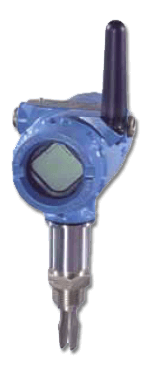An Emerson Exchange 365 community post, How Level Switches with Built–In Diagnostics Reduce Maintenance Costs, alerted me to a Process Worldwide article with the same title by Emerson’s Kevin Cullen.
Kevin describes the advanced diagnostics available to instrumentation and control engineers in vibrating fork level switches. He describes the theory of operation of these level switches:
Operating on the principle of a tuning fork, an internal piezoelectric crystal oscillates an external fork at its natural frequency. The frequency changes depending on the medium in which it is immersed — the denser the liquid, the lower the frequency. Thus, the frequency varies depending on whether the fork is immersed or dry.
This technology is suitable for liquids and slurries and highly resistant to:
…flow, turbulence, bubbles, foam, vibration, solid particles, build-up, or fluid properties.
The devices are often used for:
…high and low level detection in liquid tanks as a backup to a continuous level transmitter, activating pumps based on level, and starting or stopping mixers based on level around the blades.
Many vibrating fork level switches have basic diagnostics, which provide:
…output status, calibration, internal electronics failure, and load fault.
 Kevin highlights some of the detectable conditions advanced diagnostics in the Rosemount 2160 wireless level switches can uncover:
Kevin highlights some of the detectable conditions advanced diagnostics in the Rosemount 2160 wireless level switches can uncover:
…external damage to the fork, internal damage to the sensor, media buildup, and excessive corrosion on the fork. In addition, the 2160 provides fail-safe operation for both high and low level applications.
In many process plants, lack of infrastructure for wiring has been an issue in adding level instrumentation to tanks and other remote vessels. Kevin notes that:
Wireless communication presents an obvious alternative to instrumentation cabling, and self-organizing mesh networks based on the IEC 62591 (WirelessHART) standard are starting to make a significant impact in these remote monitoring applications. Wireless-enabled vibrating-fork level sensors with inbuilt wireless adaptors make connection to an existing wireless network quick and easy.
By wiring or networking these switches and associated diagnostics back to the maintenance personal, troubleshooting through AMS Device Manager can be done remotely, which:
…eliminates unnecessary trips to the field, optimizes maintenance, and minimizes downtime by enabling users to identify faults and take action before potential problems impact productivity and quality.
If you are comparing level switch technologies, this article provides a good overview on the vibrating fork level sensing technology.
